Algarve: The East
May. 9th, 2023 07:33 amStill in beautiful Portugal and exploring the Algarve, this next two parter of a pic spam presents you with cities, churches and storks in the first part, and in the second… well, you’ll find out. But first, after previous pic spams featured the Western half of the Algarve, let’s move on to the East.
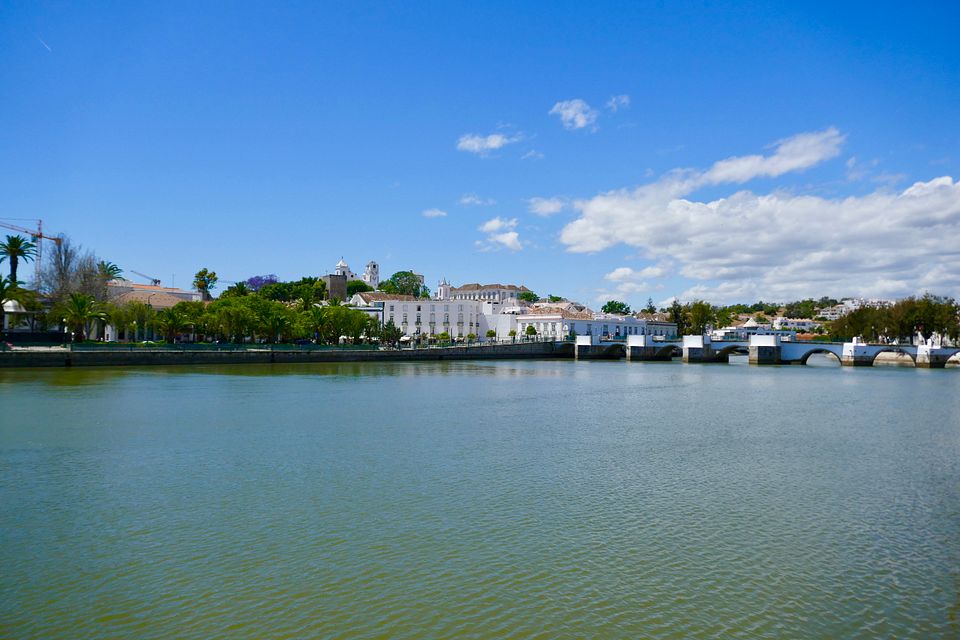
Starting with the town of Loule and its famous morning market, outside and inside:
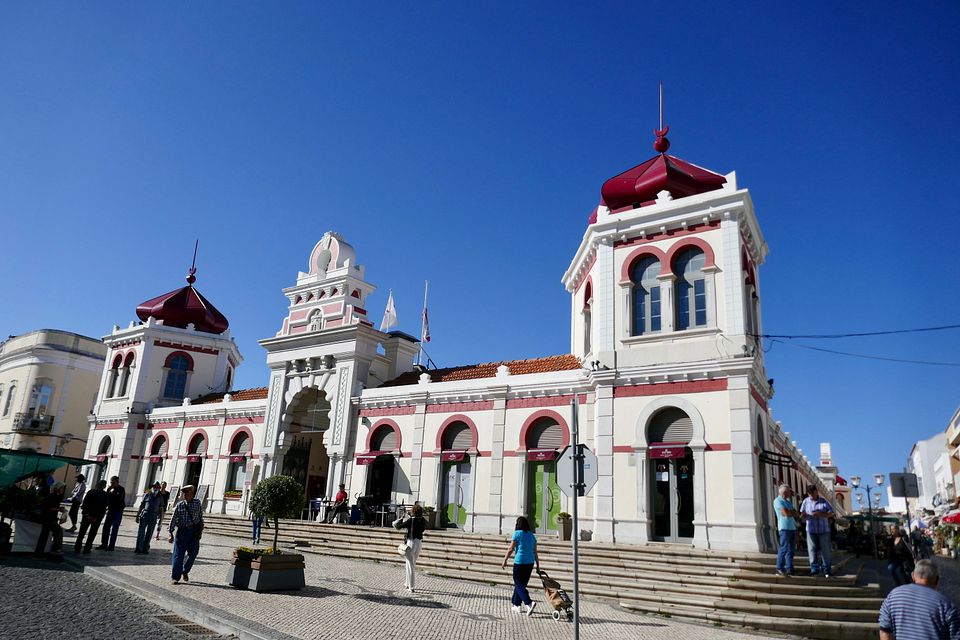


Loule also has the remnants of an Arab castle - these are going to be a repeated feature in this pic spam.
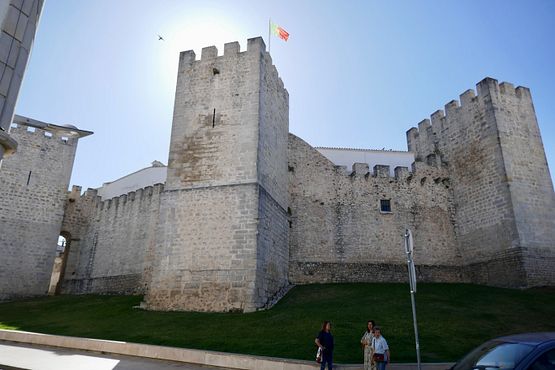
And lots of doves fond of the public wells:
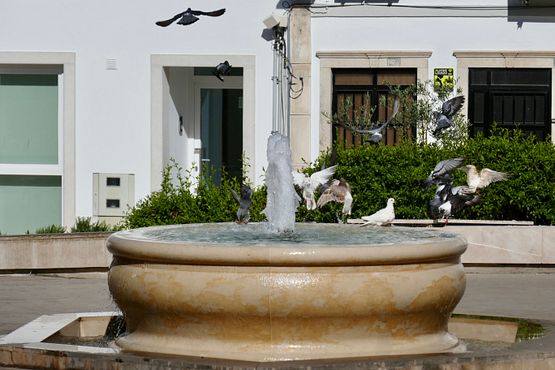
Moving on to Almancil, a name of obvious Arab origin, which is famous for precisely one church, and what a church it is! It’s Portuguese Tiles Apotheosis Time:
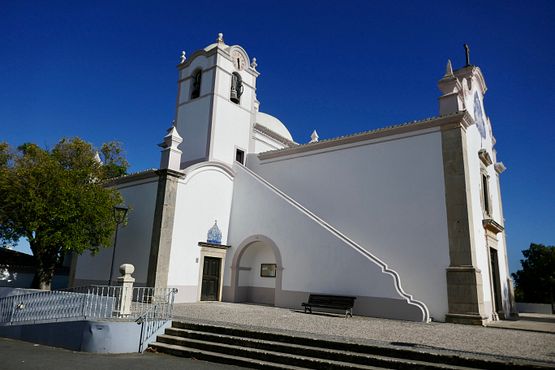
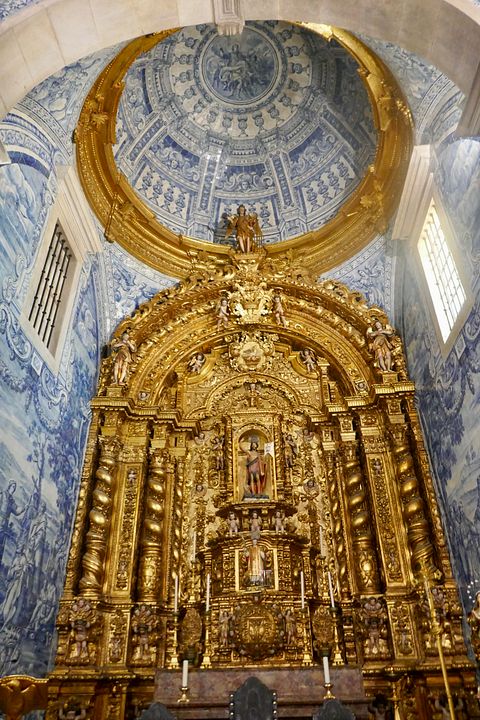
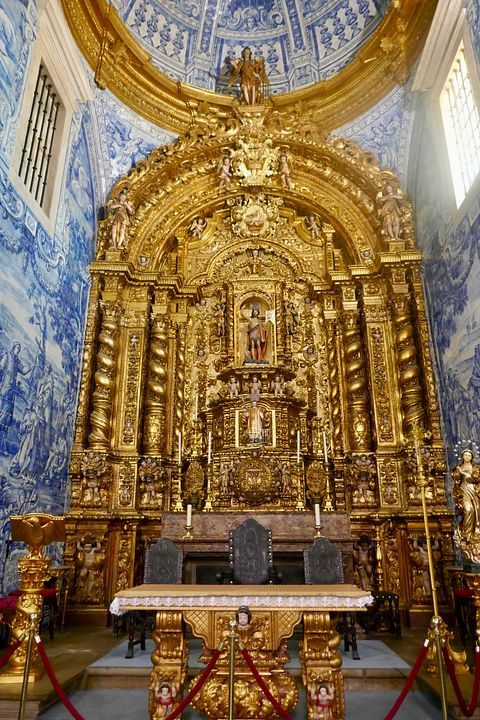
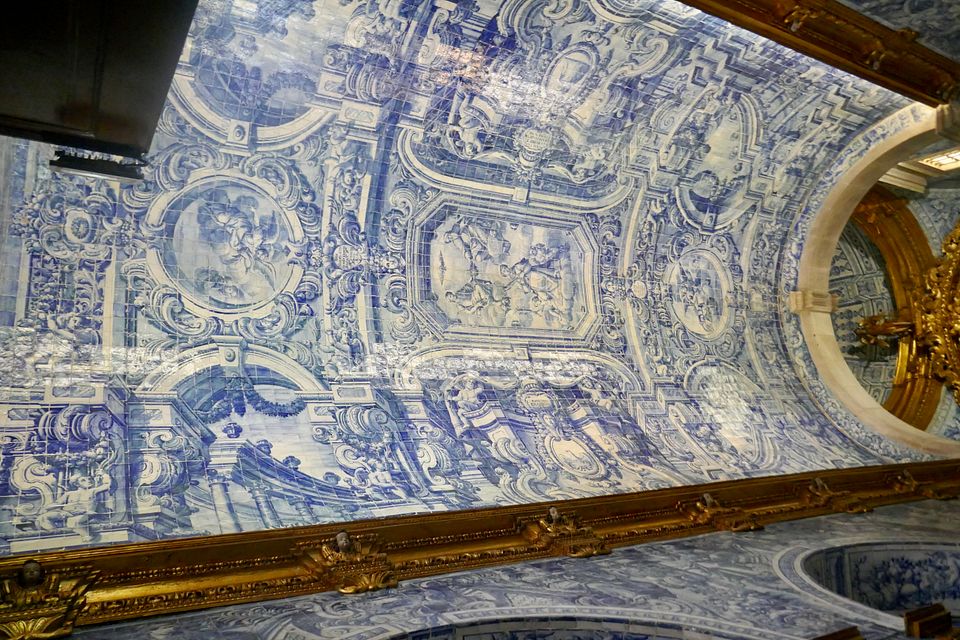


For pure contrast, this church spotted in in Olhao couldn’t be greater, so of course I had to put it here:

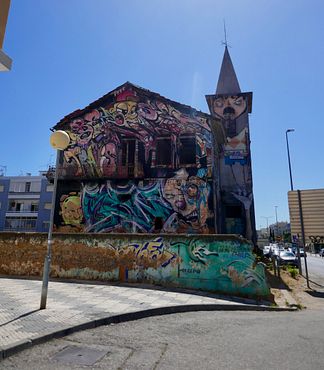
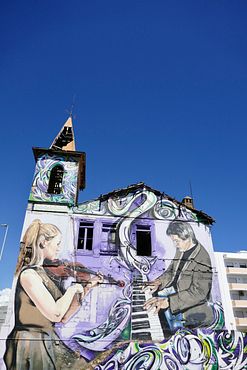
Olhao’s market halls were constructed by Monsieur Eiffel himself, but alas they were closed by the time we got there.

As was the Maria Misericordia church. However, it did present us with storks and their nest on its rooftops. (Storks are everywhere and are going to be a recurring feature of this post.)
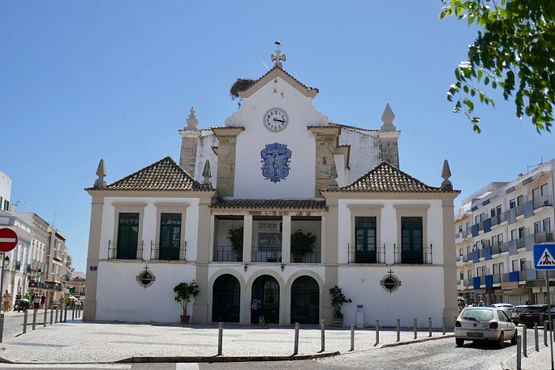



There is a separate backside open chapel which traditionally gets visited by the wives of fishermen praying for the safety of their men:
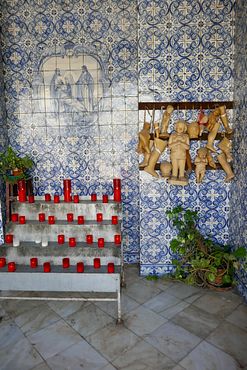
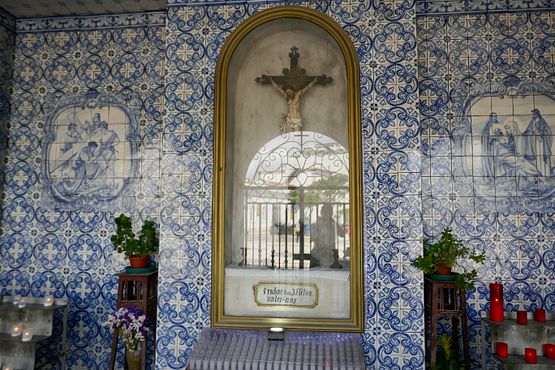
Also in the neighbourhood: a poem by second most famous Portuguese poet Fernando Pessao about seamen:
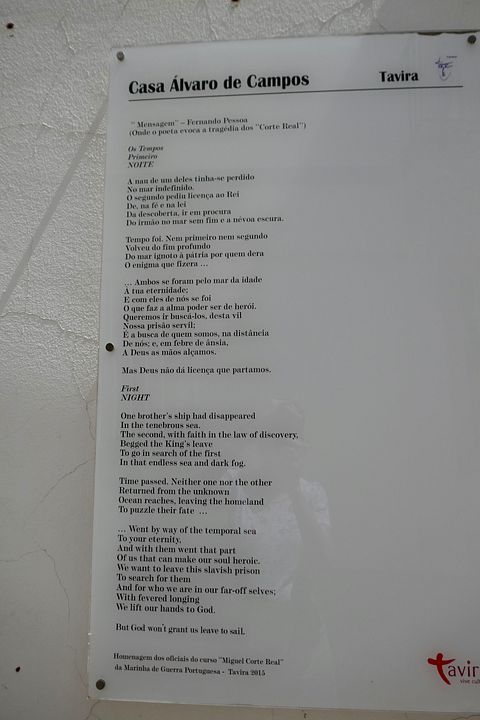
Nearing the other end of the social scale from sea men are the nobles able to build themselves palaces. Like the Counts of Estoi, though they had to sell this one in 1987. It’s a hotel these days.
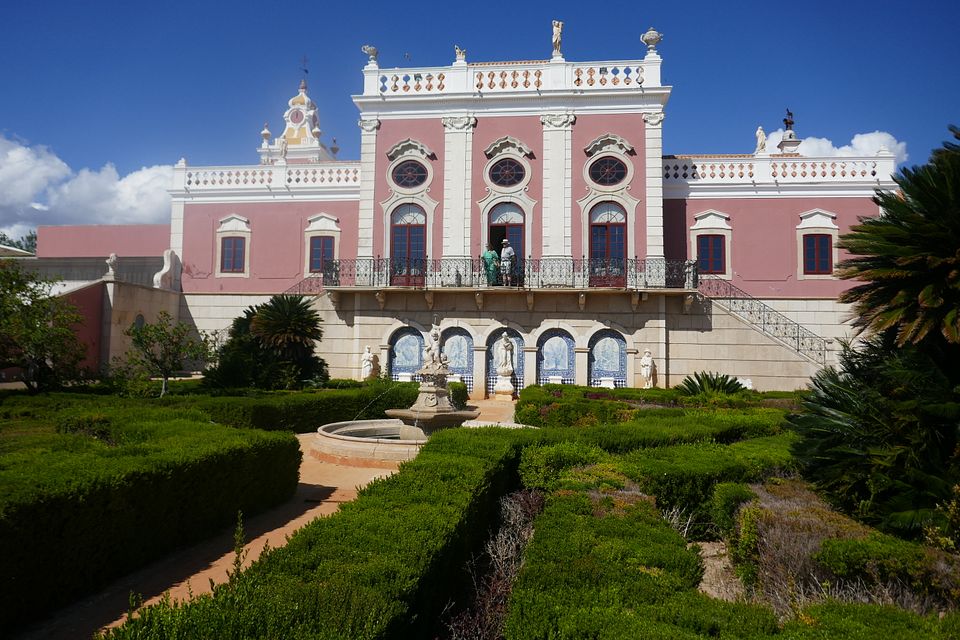
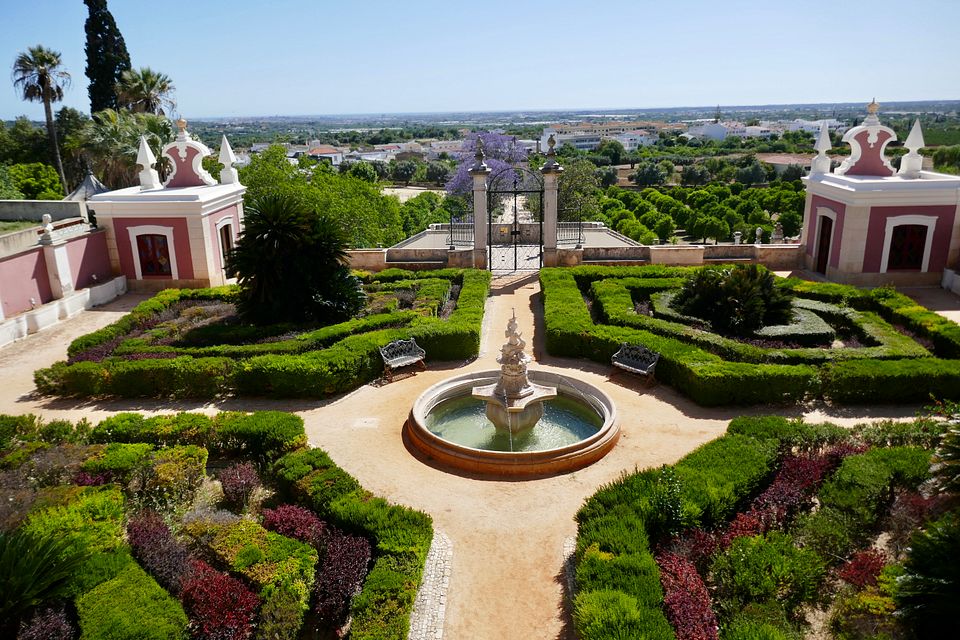
The Romans had already liked the same spot, and so there are remnants of a Roman villa around.

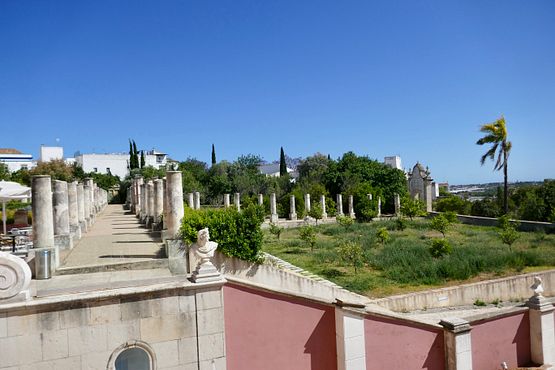
And a look to the locked-to-publich visitors grand stairwell with tiles, visible from the outside gate:

In conclusion:

On to beautiful Tavira, which with its Roman bridge, Arab castle and Christian church sums up Portuguese history, in a way:
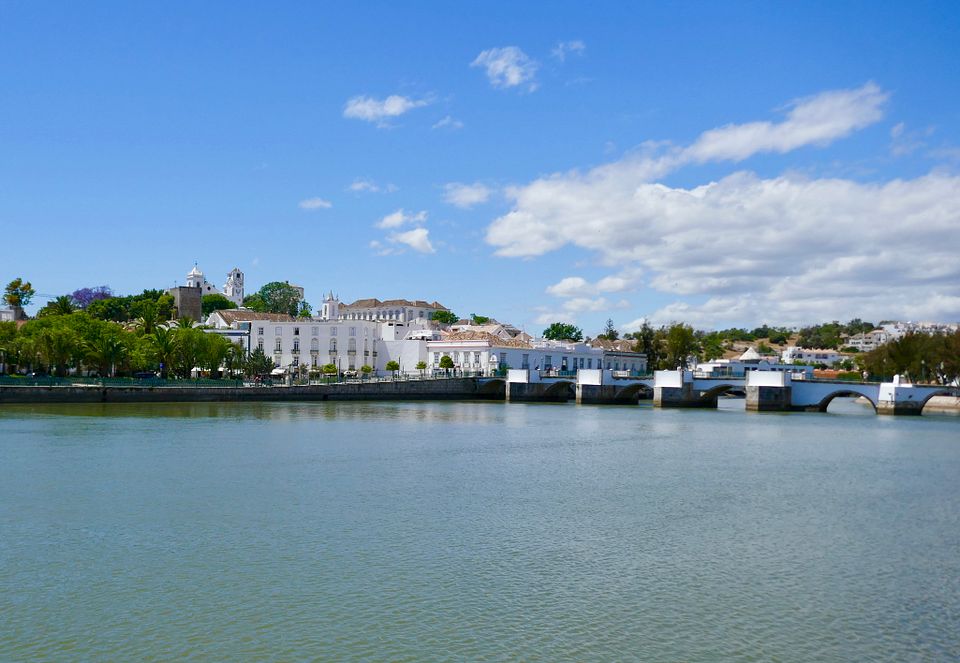


The garden inside the castle ruins:

The great view over Tavira:
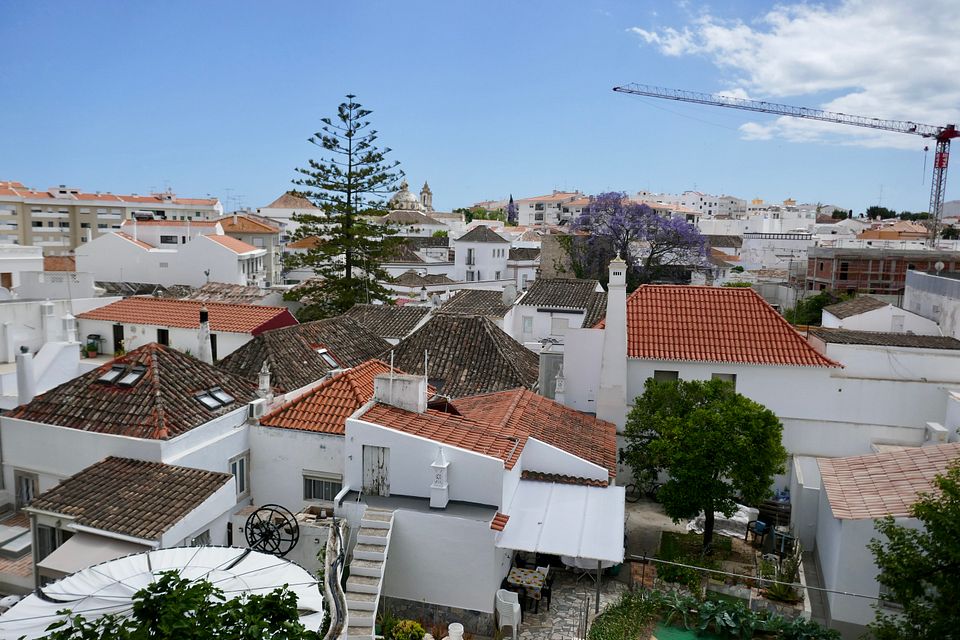

Getting close to the Spanish border now. Here’s the bridge connecting Portugal and Spain these days:

I took its picture from one of the two castles referred to collectively as Castro Marim. There used to be a direct connection between them, but then it was torn down to make room for a road between, boo. Anyway, behold:

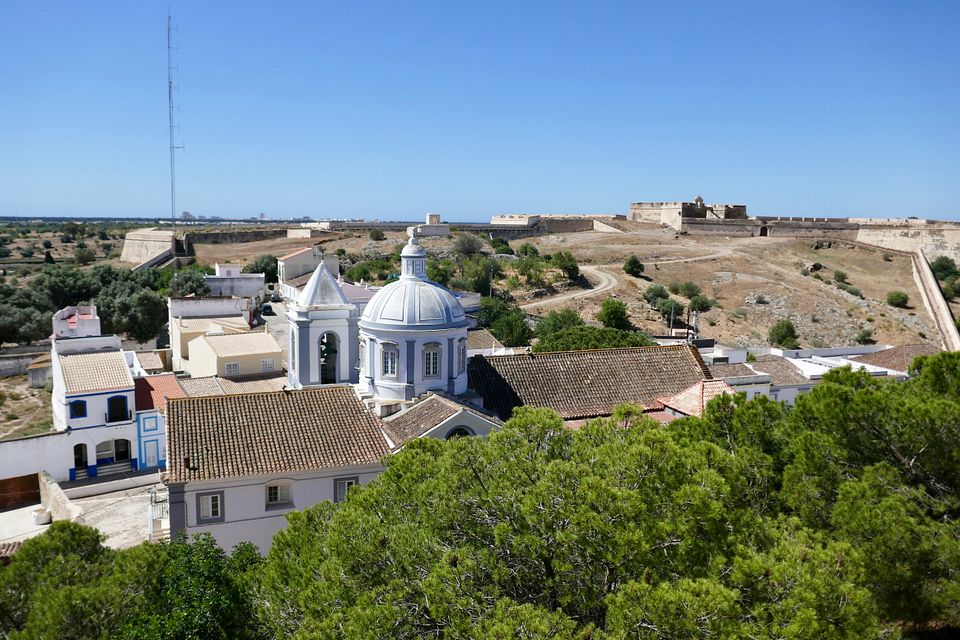

Not moving on to Spain, let’s go westwards again, to Faro. Known perhaps to some afficiniados of Elizabethan history because Essex (yes, that one) raided it and among other things stole the Bishop’s library which is now part of the Bodleian Library at Oxford. But first: Stork time!
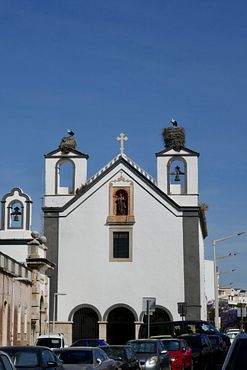

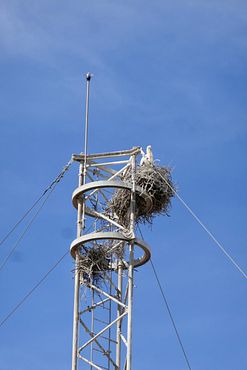
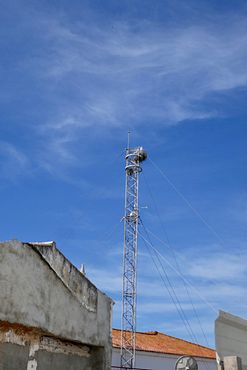

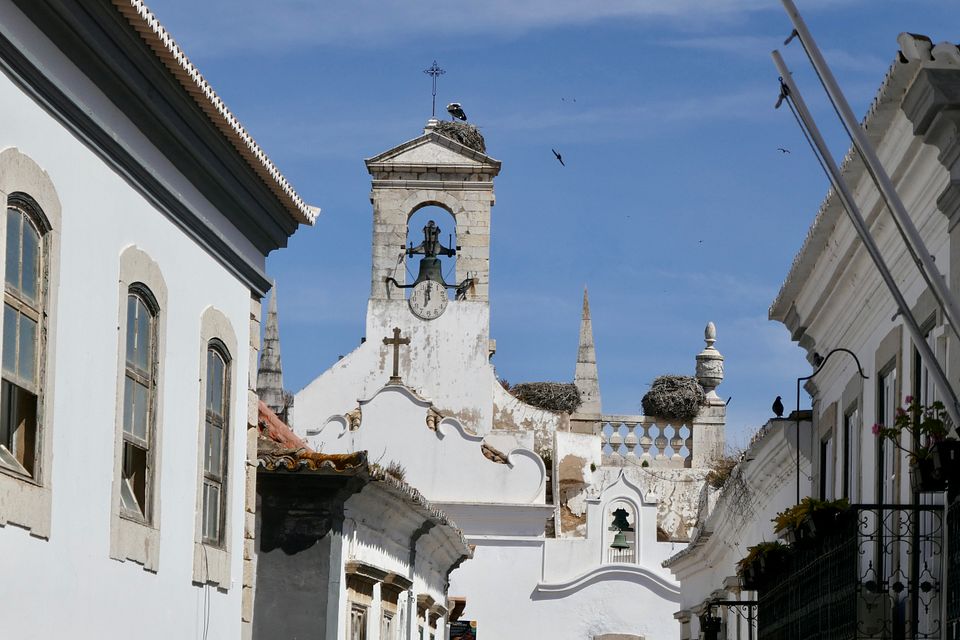

And sun sails between alleys:

One of the two most famous churches of Faro is St. Carmel:
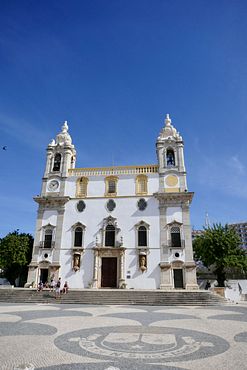
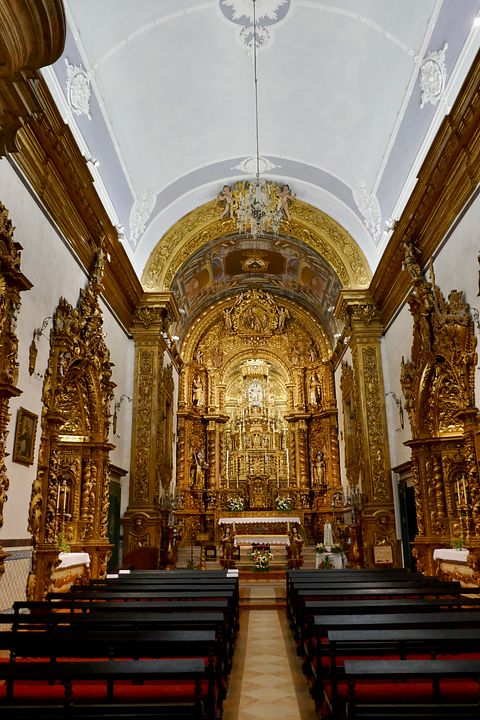
Faro is famous for two reasons. One is all the pomp inside. Yes, that’s where a lot of the Brazilian riches went (well, after the Essex raid, he plundered what they had before), which is why all the interiors are Baroque or Rokoko:

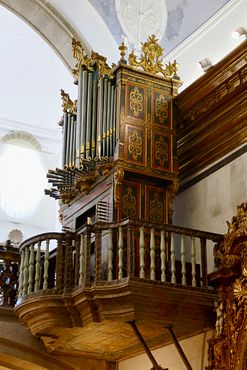
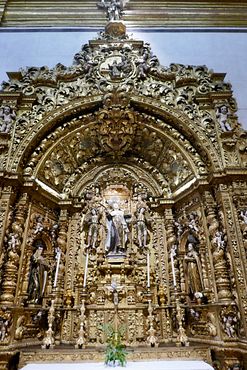

And in sheer contrast to these gaudy altars, but also very Baroque, behold the Bones Chapel. Yes, made up of human bones:

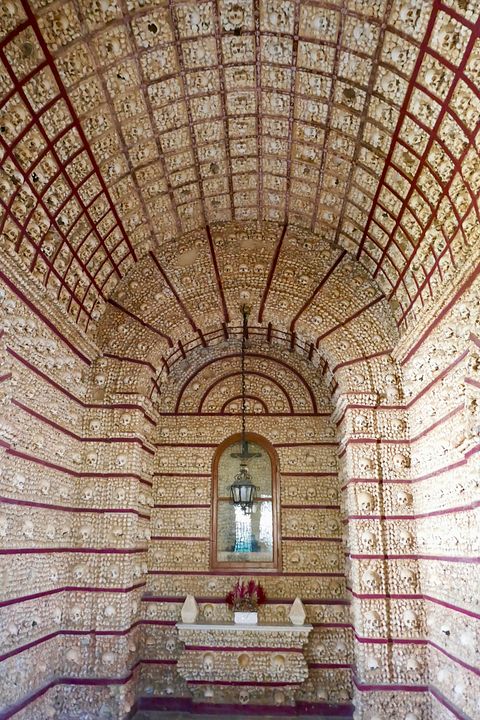
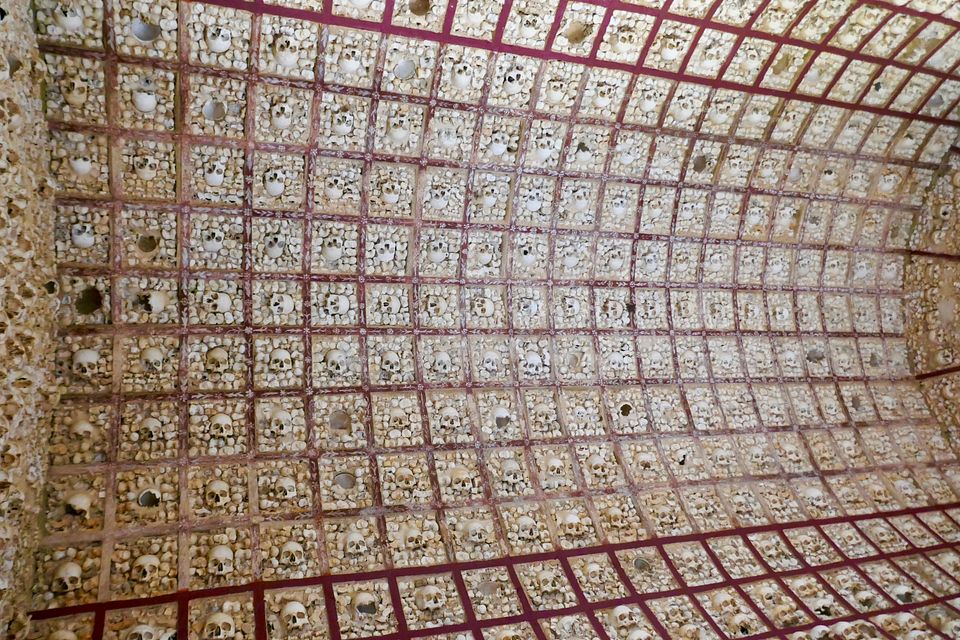
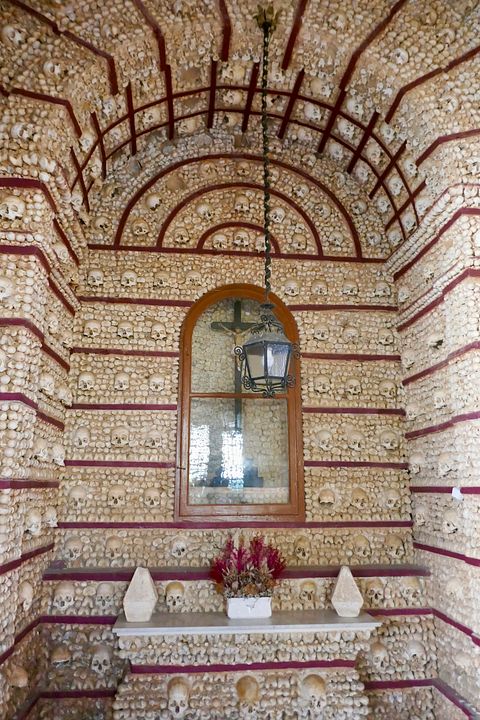
Okay. We’ve been duly reminded of our shared mortality. Time for some Storks!
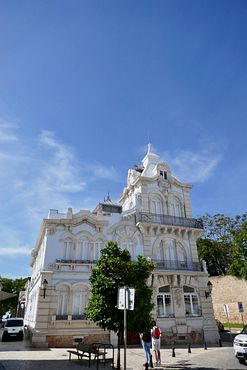

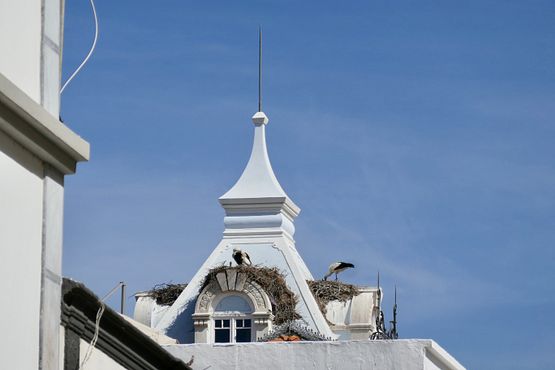
And onto the cathedral. This one was burned down (thank you, Essex) with only the tower left from the original building.

Inside, it is not quite as gaudy as St. Carmel, but trying its best.




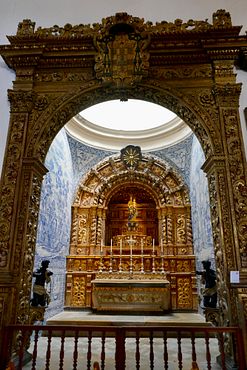


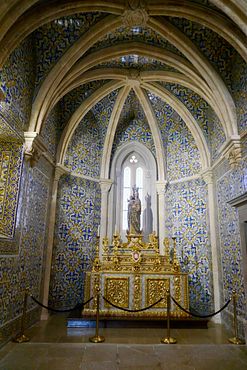




And it also has a Bones Altar outside:
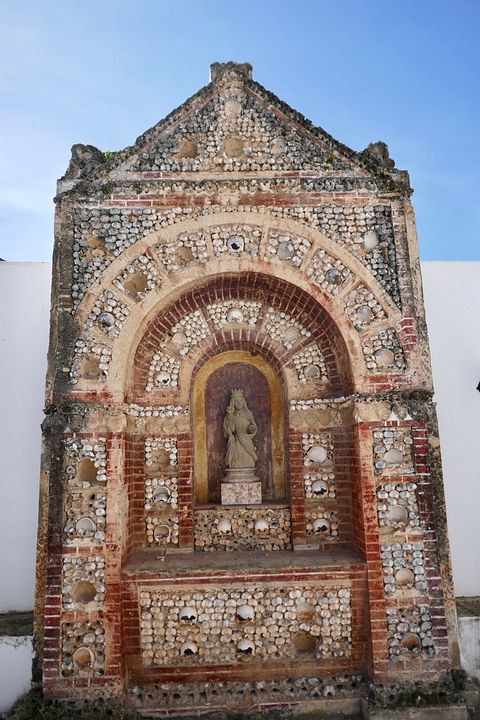
Most of all, though, it has an awesome panoramic view over Faro:
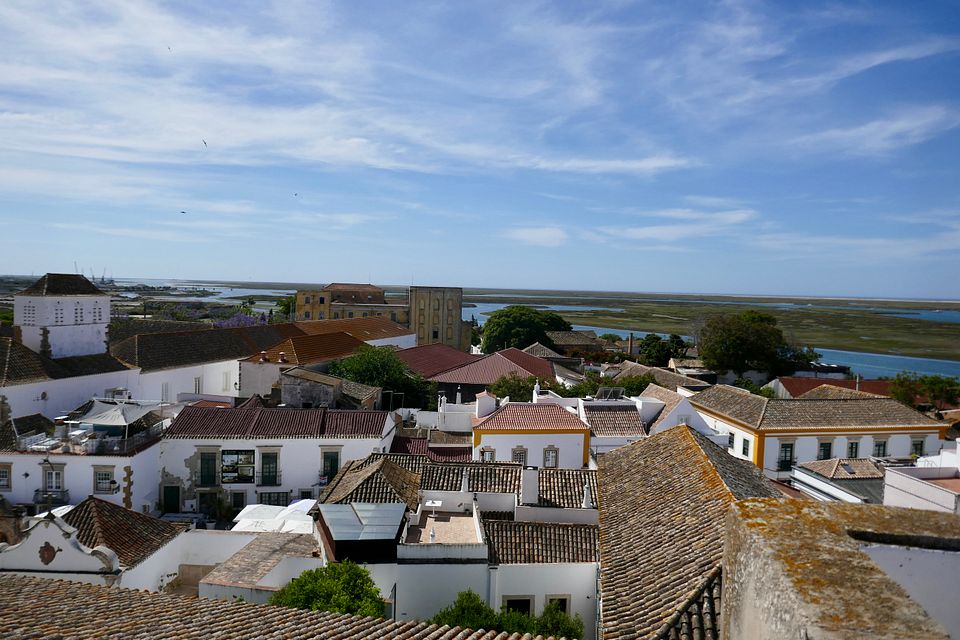
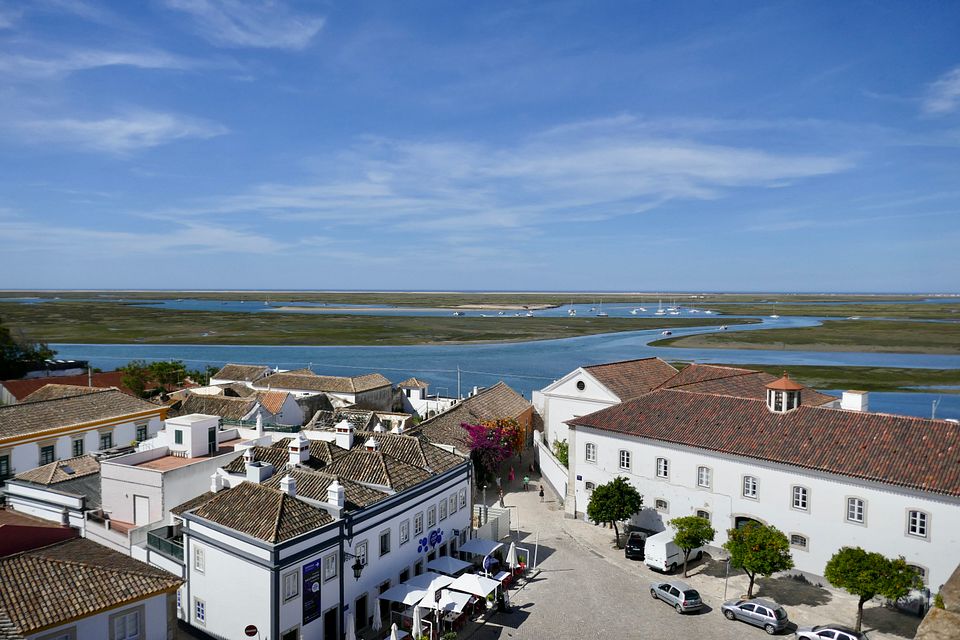

Faro wasn’t always the seat of the bishop and the provincial capital. This used to be Sives, which in the Islamic era was a floroushing city with up to 30 000 inhabitants. It was reconquered for good in the 13th century. But many inhabitants still clung to the Muslim way of life, and when the bishop preached against polyamory, they drove him off. He ended up in Faro and supposedly cursed Sives for its polyamory ways. Due to said curse and more likely the sanding of the river, the city sank into decline and ended up with no more than 140 families until tourism came along and helped. Here it is, with a Roman bridge and the gorgeous Arab castle as its most notable features:
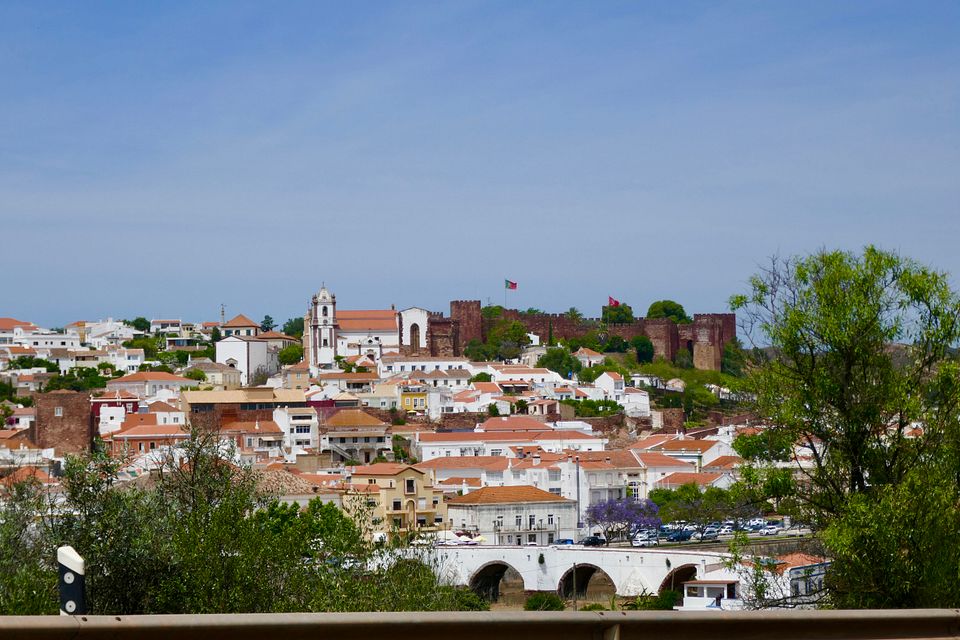

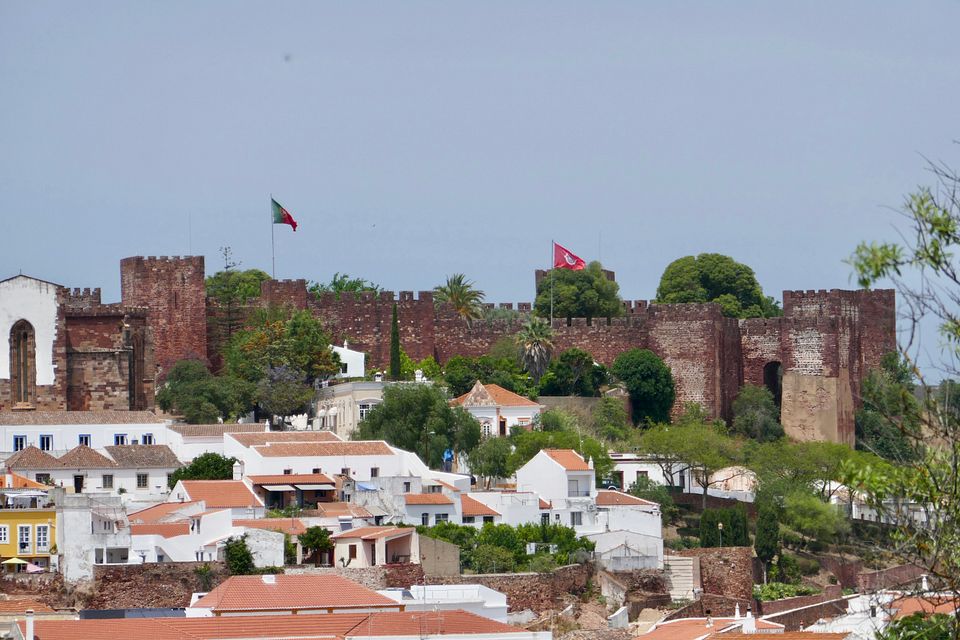

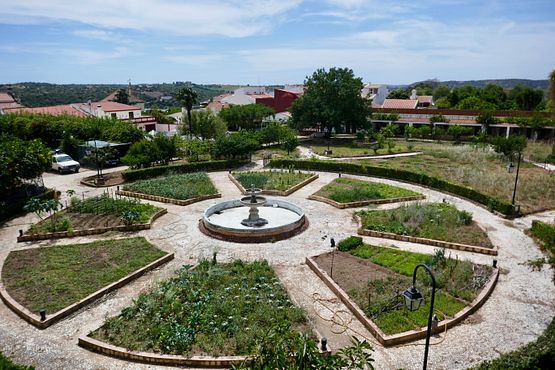


And this was it for part I. Part II tonight!

Starting with the town of Loule and its famous morning market, outside and inside:



Loule also has the remnants of an Arab castle - these are going to be a repeated feature in this pic spam.

And lots of doves fond of the public wells:

Moving on to Almancil, a name of obvious Arab origin, which is famous for precisely one church, and what a church it is! It’s Portuguese Tiles Apotheosis Time:






For pure contrast, this church spotted in in Olhao couldn’t be greater, so of course I had to put it here:



Olhao’s market halls were constructed by Monsieur Eiffel himself, but alas they were closed by the time we got there.

As was the Maria Misericordia church. However, it did present us with storks and their nest on its rooftops. (Storks are everywhere and are going to be a recurring feature of this post.)




There is a separate backside open chapel which traditionally gets visited by the wives of fishermen praying for the safety of their men:


Also in the neighbourhood: a poem by second most famous Portuguese poet Fernando Pessao about seamen:

Nearing the other end of the social scale from sea men are the nobles able to build themselves palaces. Like the Counts of Estoi, though they had to sell this one in 1987. It’s a hotel these days.


The Romans had already liked the same spot, and so there are remnants of a Roman villa around.


And a look to the locked-to-publich visitors grand stairwell with tiles, visible from the outside gate:

In conclusion:

On to beautiful Tavira, which with its Roman bridge, Arab castle and Christian church sums up Portuguese history, in a way:



The garden inside the castle ruins:

The great view over Tavira:


Getting close to the Spanish border now. Here’s the bridge connecting Portugal and Spain these days:

I took its picture from one of the two castles referred to collectively as Castro Marim. There used to be a direct connection between them, but then it was torn down to make room for a road between, boo. Anyway, behold:



Not moving on to Spain, let’s go westwards again, to Faro. Known perhaps to some afficiniados of Elizabethan history because Essex (yes, that one) raided it and among other things stole the Bishop’s library which is now part of the Bodleian Library at Oxford. But first: Stork time!







And sun sails between alleys:

One of the two most famous churches of Faro is St. Carmel:


Faro is famous for two reasons. One is all the pomp inside. Yes, that’s where a lot of the Brazilian riches went (well, after the Essex raid, he plundered what they had before), which is why all the interiors are Baroque or Rokoko:




And in sheer contrast to these gaudy altars, but also very Baroque, behold the Bones Chapel. Yes, made up of human bones:




Okay. We’ve been duly reminded of our shared mortality. Time for some Storks!



And onto the cathedral. This one was burned down (thank you, Essex) with only the tower left from the original building.

Inside, it is not quite as gaudy as St. Carmel, but trying its best.












And it also has a Bones Altar outside:

Most of all, though, it has an awesome panoramic view over Faro:



Faro wasn’t always the seat of the bishop and the provincial capital. This used to be Sives, which in the Islamic era was a floroushing city with up to 30 000 inhabitants. It was reconquered for good in the 13th century. But many inhabitants still clung to the Muslim way of life, and when the bishop preached against polyamory, they drove him off. He ended up in Faro and supposedly cursed Sives for its polyamory ways. Due to said curse and more likely the sanding of the river, the city sank into decline and ended up with no more than 140 families until tourism came along and helped. Here it is, with a Roman bridge and the gorgeous Arab castle as its most notable features:







And this was it for part I. Part II tonight!

no subject
Date: 2023-05-09 08:15 am (UTC)no subject
Date: 2023-05-09 01:41 pm (UTC)no subject
Date: 2023-05-09 09:11 am (UTC)Wow, some of those stork nests must have been used for years already, judging by their size. I love how they are such a natural looking part of the town-scape. And all the violet trees - are those Jacarandas?
no subject
Date: 2023-05-09 01:42 pm (UTC)no subject
Date: 2023-05-09 10:46 am (UTC)no subject
Date: 2023-05-09 01:43 pm (UTC)no subject
Date: 2023-05-13 05:27 am (UTC)It’s Portuguese Tiles Apotheosis Time: lolololol okay this is funny because it's NOT WRONG. Wow!
(ETA: hahahaha, unlike
Stooooorks!
That Bones Chapel, though. That's... very, er, somber.
no subject
Date: 2023-05-13 03:06 pm (UTC)